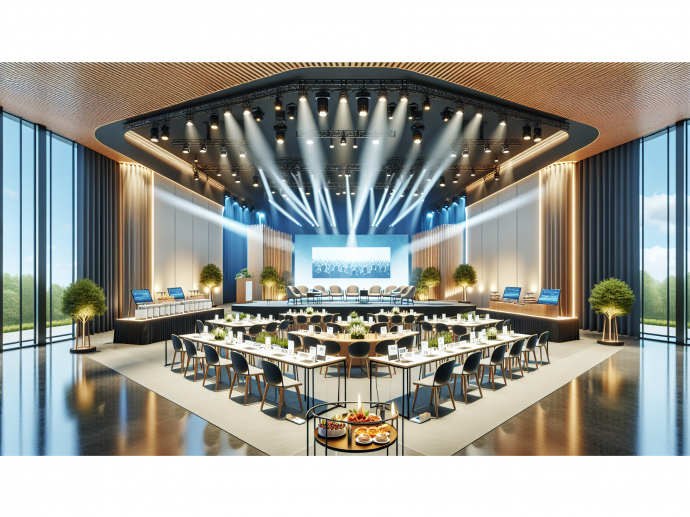Categories more
- Adventures (16)
- Arts / Collectables (14)
- Automotive (36)
- Aviation (10)
- Bath, Body, & Health (73)
- Children (6)
- Cigars / Spirits (30)
- Cuisine (16)
- Design/Architecture (17)
- Electronics (12)
- Entertainment (4)
- Event Planning (3)
- Fashion (42)
- Finance (8)
- Gifts / Misc (6)
- Home Decor (44)
- Jewelry (39)
- Pets (3)
- Philanthropy (1)
- Real Estate (12)
- Services (21)
- Sports / Golf (14)
- Vacation / Travel (60)
- Watches / Pens (14)
- Wines / Vines (24)
- Yachting / Boating (15)
Elevating Corporate Events with Experiential Strategies
Published
08/26/2024Corporate events are advancing, and the emphasis on creating immersive experiences is more pronounced than ever. Elevating these events through experiential strategies is not just a trend but a necessity. This approach enhances engagement, fosters stronger connections and leaves a lasting impression.
In today's competitive landscape, standing out in the corporate sphere requires more than traditional event planning. You must integrate experiential strategies to create memorable and impactful events. By focusing on immersive experiences, you can ensure that your corporate gatherings resonate deeply with your audience.
The Importance of Experiential Strategies
Incorporating experiential strategies into your corporate events can significantly enhance attendee engagement. This approach moves beyond conventional methods, offering an interactive and memorable experience. When you utilize an event planning solution, it becomes easier to manage these complex elements seamlessly. The goal is to create an environment where attendees feel involved and valued, which ultimately leads to stronger relationships and better business outcomes.
Experiential strategies are particularly relevant in today's digital age. With the rise of virtual events, it is crucial to find innovative ways to captivate your audience's attention. By leveraging technology and creative concepts, you can transform a standard corporate event into an unforgettable experience. This relevance is underscored by the increasing demand for unique and engaging content in business operations.
Maximizing Attendee Engagement
One of the primary benefits of employing experiential strategies is the boost in attendee engagement. Attendees are more likely to participate actively when they are part of an immersive experience rather than passive observers. For instance, incorporating interactive activities or workshops can make your event more dynamic and enjoyable. This heightened level of engagement often translates into more meaningful interactions and networking opportunities.
Likewise, engaged attendees are more likely to retain information and have a positive perception of your brand or company. It is essential to create moments that not only capture attention but also foster a sense of community and collaboration among participants. By prioritizing engagement, you can ensure that your corporate events deliver long-lasting value to all stakeholders involved.
The Role of Technology in Experiential Events
Technology plays a pivotal role in enhancing experiential strategies for corporate events. From augmented reality (AR) to virtual reality (VR), these tools can create immersive environments that captivate your audience's imagination. Utilizing state-of-the-art technology allows you to present information in innovative ways, making your events more impactful and memorable.
For example, incorporating VR experiences can transport attendees to different locations or scenarios relevant to your business objectives. This not only adds an element of excitement but also provides a unique way to convey key messages. Embracing technology in this manner demonstrates forward-thinking and a commitment to delivering exceptional experiences.
Measuring the Success of Experiential Strategies
It is crucial to measure the effectiveness of your experiential strategies to ensure they meet your objectives. For example, key performance indicators (KPIs) such as attendee satisfaction, engagement levels and return on investment (ROI) should be closely monitored. Gathering feedback from participants can provide valuable insights into what worked well and areas for improvement.
Additionally, leveraging analytics tools can help you track various metrics in real-time, allowing for data-driven decisions. This continuous evaluation process ensures that your future corporate events will be even more successful and aligned with your goals. By understanding the impact of your strategies, you can refine them to better suit the needs of your audience.















